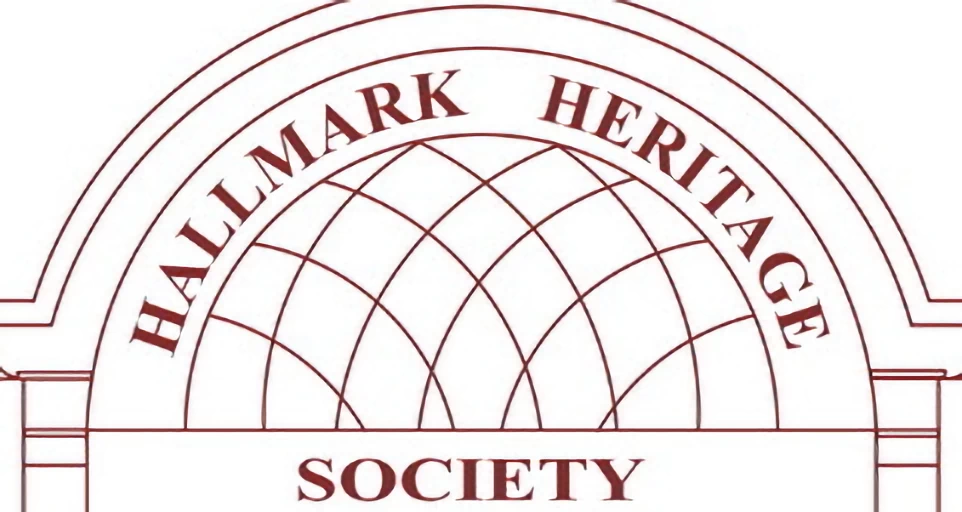Daily Colonist, November 18, 1962.
SEVENTY-FIVE YEARS OF PROGRESS – BC’s Provincial Museum Steadily Expands.
By G. Clifford Carl
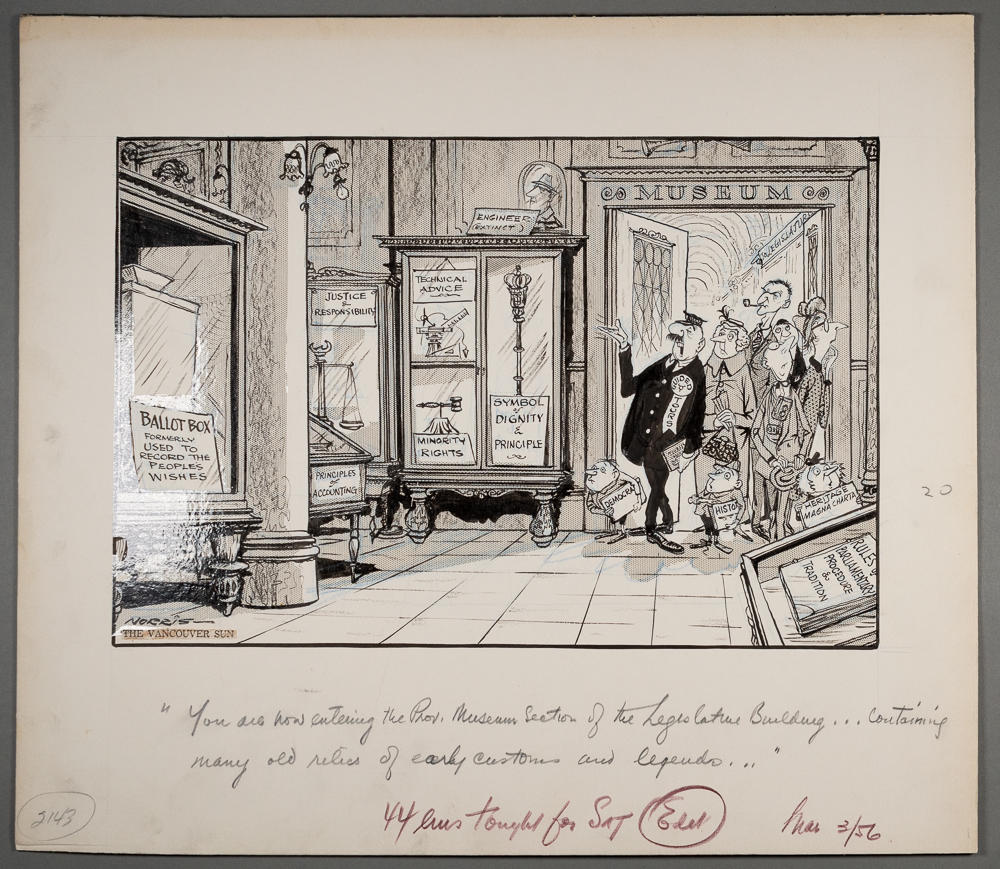
Seventy-five years ago, the Provincial Museum of Natural History first opened its doors officially to the general public. Thus, one of the oldest-established services of the provincial government, antedating the Game Commission, the Forest Service, and other branches my many years.
The first move to start a museum was made on January 14, 1886, when thirty prominent citizens of Victoria petitioned the Lieut.-Gov., the late Clement F. Cornwall, to establish an institution “for the preservation of the flora, fauna, ethnology and minerals of this province.” Among those signing the formal request were Matthew B Begbie, G. Columbia, R. P. Rithet, W. F. Tolmie, Ashdown H. Greene, Hurst Pellew Crease, and others who were prominent in public affairs at that time.
Shortly thereafter Council approved the recommendation and on October 25 of the same year John Fannin was appointed curator, and one year later, on October 25, 1887, the museum was formally opened.
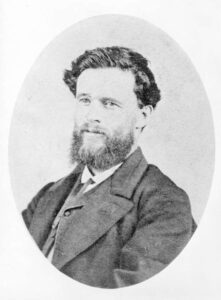
The first natural history specimens consisted of twelve cases of mountain birds and mammals prepared and presented by Mr. Fannin and these were placed on exhibition in a small room adjacent to that occupied by the provincial secretary, John Robson, in one of the old capital buildings. A few of these “originals” are still on display, attesting to the scale of Mr. Fannin and other early taxidermists.
In 1890 the museum was moved into the old Supreme Court Building which it occupied until 1897 when the present quarters were made available in the East Wing of the then new Legislative Buildings.
In those days only two floors in the new building were utilized for exhibits, offices and workshop. With the addition of more display material and particularly because of the rapidly growing Indian collection more space had to be obtained. This was accomplished in 1921 by the excavation of the basement rooms which were then used for both exhibition and storage an additional space was obtain for the herbarium which was started at that time by moving the workshop into the basement of the main building.
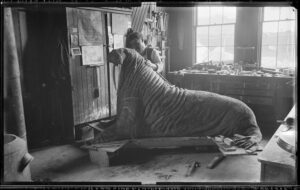
In the meantime, John Fannin had retired in 1904 because of ill health and Frances Kermode, who had been an assistant curator since 1890, was appointed in his place. Mr. Kermode remained as curator and then director until his retirement in 1940, with more than fifty-two years of service.
With the appointment of Dr. Ian McTaggart Cowan to the museum staff as biologist and Assistant Dir. in 1935 the study collections of birds and mammals began to build up rapidly. To accommodate this additional valuable material the attic space was made available for storage and the workshop was moved to quarters in an old residence on Superior Street, still being utilized.
In 1940 further changes in personnel took place. Dr. Cowan left to join the Department of zoology at the UBC, Frances Kermode retired, and Dr. G. Clifford Carl was appointed acting-director. Later, other technically and professionally trained people were added to staff and program of research work was stepped up in both natural history and anthropology.
Because the museum commenced operations under the aegis of the provincial secretary it continued in this department for many years along with the provincial library and provincial archives which were established later. Then, in order to reduce the number of agencies administered by the provincial secretary the museum, along with its fellow services, was transferred to the Department of Education.
Later, in 1961, museum became a branch of the newly established Department of recreation and conservation where it now functions in close cooperation with related services.
Even before the museum was started naturalists were carrying on fieldwork in various parts of the province. The first specimens to be displayed were collected by one of the most active in those days, John Fannin. Soon, others were busy, even in some of the more remote parts of British Columbia so that in time material arrived from the Atlin area, Peace River, Queen Charlotte Islands, the Selkirk and Rocky Mountains, the Okanogan and the West Coast of Vancouver Island.
Plants were gathered by these early naturalists and represented specimens were deposited in the provincial herbarium in the museum.
Very soon, also, anthropological material began to be added to the collections. By 1898, when the first “catalogue” was published, 1066 Indian items were listed, representing the major linguistic groups of the province.
With the accumulation of animal, plant and Indian materials a certain amount of research was possible and as the years went by a number of studies were carried out. First work consisted mainly of compiling an inventory of fauna and flora, followed by studies of range and distribution in some groups such as the birds and mammals. In the mid-1930s a special study was started of the distribution and speciation of small mammals on coastal islands, a piece of research that is still carried on.
In more recent years detailed studies have been made of certain families and their taxonomy, of insect life histories and of the distribution of sea-bird colonies along the coast.
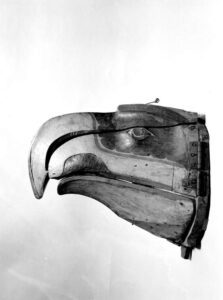
In the anthropological division research has been carried out in Salishan ethnology, development of prehistoric stone sculpture, social organization in the Tsimshians, and totem-pole carving. In addition, specific archaeological work has been carried on in collaboration with UBC and much has been learned about the Indians who migrated to this province soon after the retreat of the latest ice-sheet.
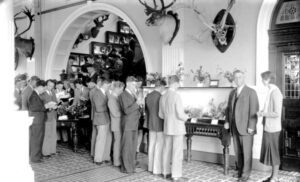
At all times staff members of the museum have been active in giving lectures to a variety of audiences. A popular series enjoyed by thousands of schoolchildren in the Victoria area was the demonstrations and movies presented Saturday mornings for seventeen consecutive years commencing in 1942 and ending only one production problems became insurmountable.
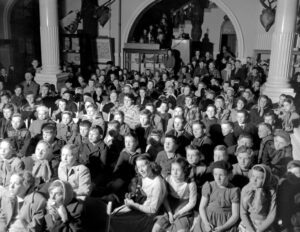
The field of visual education was also exploited early by providing motion pictures, filmstrips, specimens and travelling exhibits to the school boards of both Victoria and Vancouver and to the audio-visual branch of the Department of Education. In this way authority of materials on the natural history and Indian life of the province have been made available to teachers.
It was realized early that to make the results of the museum’s work available to the public at large it was necessary to publish. The first publication appeared in 1898, a Preliminary Catalogue of the Collections of the Natural History and Anthropology in the Provincial Museum, Victoria British Columbia. It is now a “collector’s item.” In 1909 the first “Visitors Guide” appeared in a 1913 the first of a long series of annual reports was produced.
Divide an outlet for semi-technical material the “Occasional Paper Series” was launched in 1939 with an account of the animal life in the Peace River District, and eleven other numbers and appeared to date.
For the layman, however, by far the most popular publication is the well-illustrated “Handbook Series Those Quote which was started over thirty years ago and which now includes twenty numbers covering fishes, amphibians, reptiles, birds, mammals and several plant groups all found within the province.
Information concerning Indians in BC has been made available in several forms. “Anthropology in British Columbia” a semi-technical periodical started in 1950, contains material for the student or research worker while the “Heritage Series” published by the Department of Education is the source of much information of value to the teacher or layman.
To commemorate the current anniversary the museum has just issued his latest publication and illustrated “Guide” to the collection. The booklet is intended to mark this special occasion in the history of the institution, and also provide a souvenir or visitors.
The various publications have not only help to spread knowledge of the flora, fauna and Indians of the province but they have also greatly publicized British Columbia and other parts of the world.
During the seventy-five yerar period just covered and particularly within the last decade or so, the museum idea has change radically. No longer is a museum merely a warehouse of relics. Nowadays it is expected to provide services hardly imagined in the past. A modern institution requires not only ample space for displays and storage but also an auditorium, a classroom, workshop, love oratory, sales counter, cafeteria, and other facilities. It should also house a staff of specialists capable of carrying on work in the museum’s field of interest plus others trained in educational work and in research.
The Provincial Museum has been “bursting at the seams” for many years: exhibition spaces crowded, and storage rooms are fold to overflowing. But relief is in sight. Premier WAC Bennett has recently announced that additional public buildings are planned, among them new quarters for a greatly enlarged museum. The next few years should see exciting developments in this early establish service of the provincial government.
